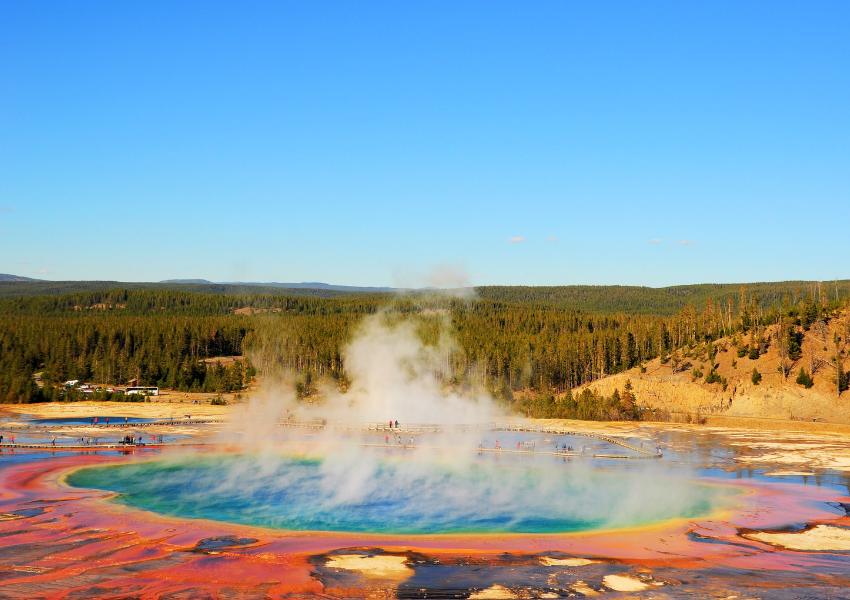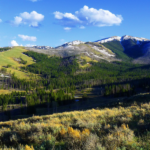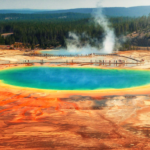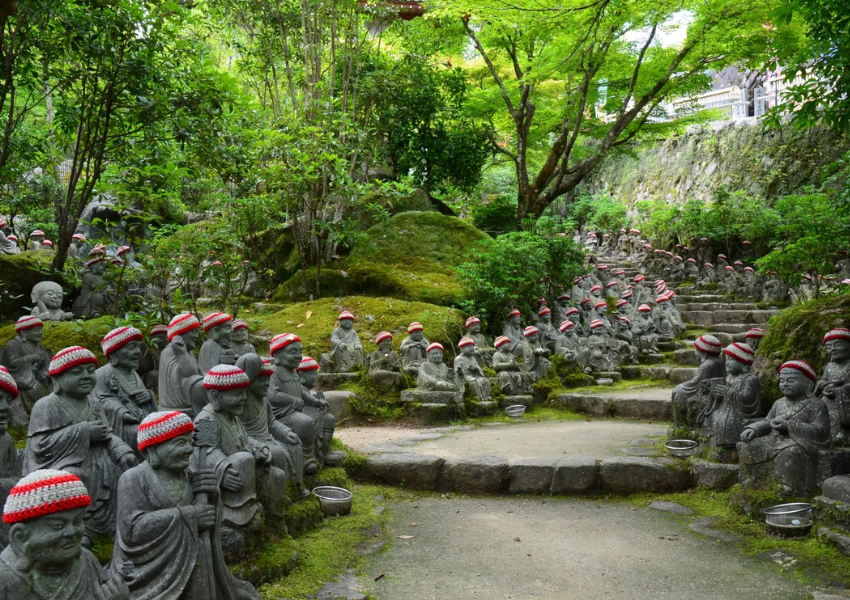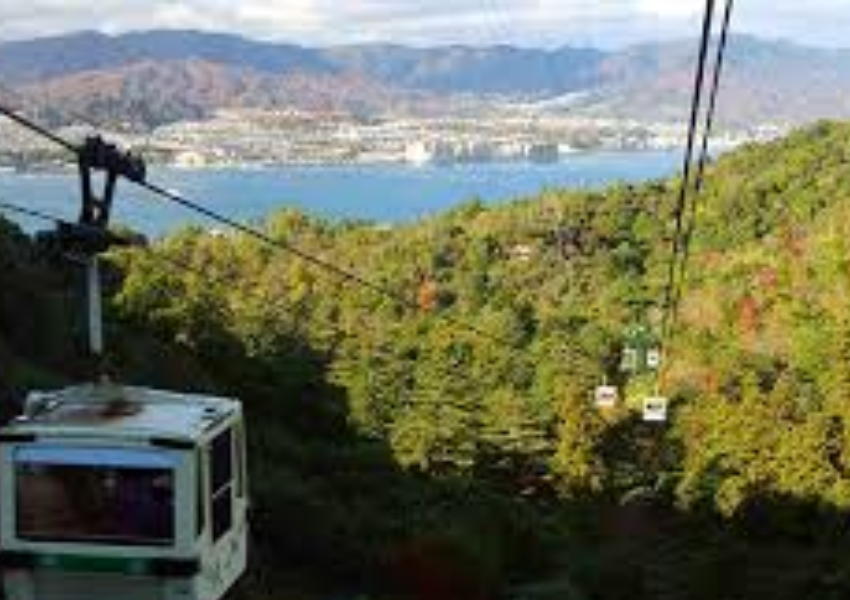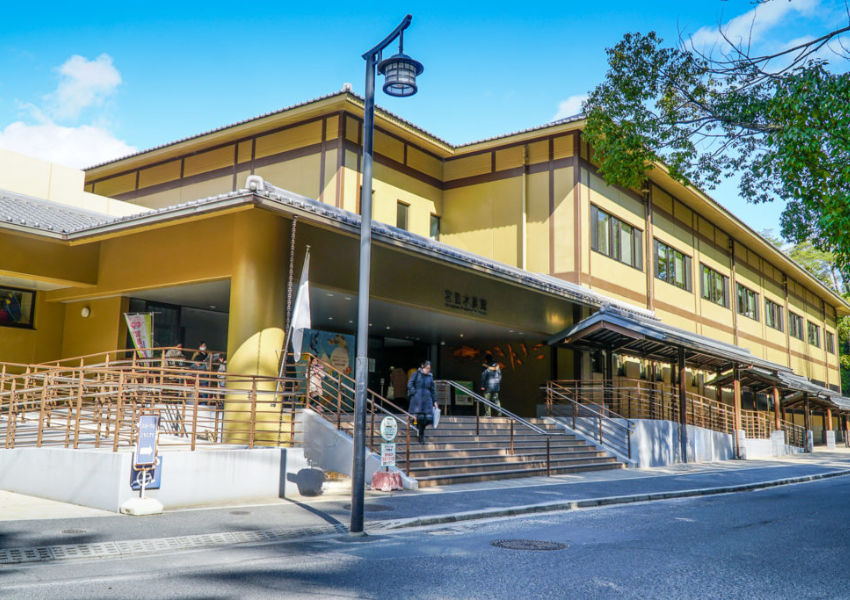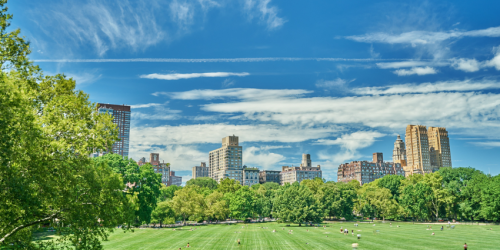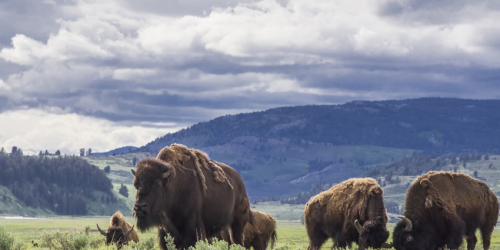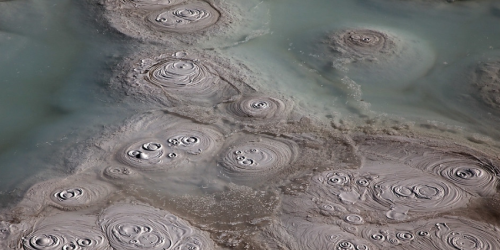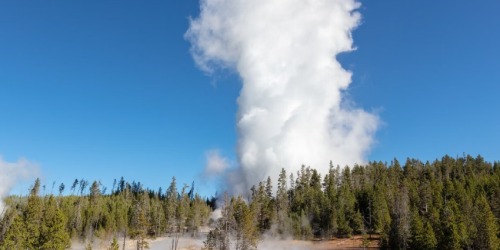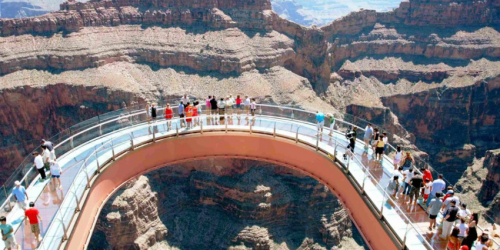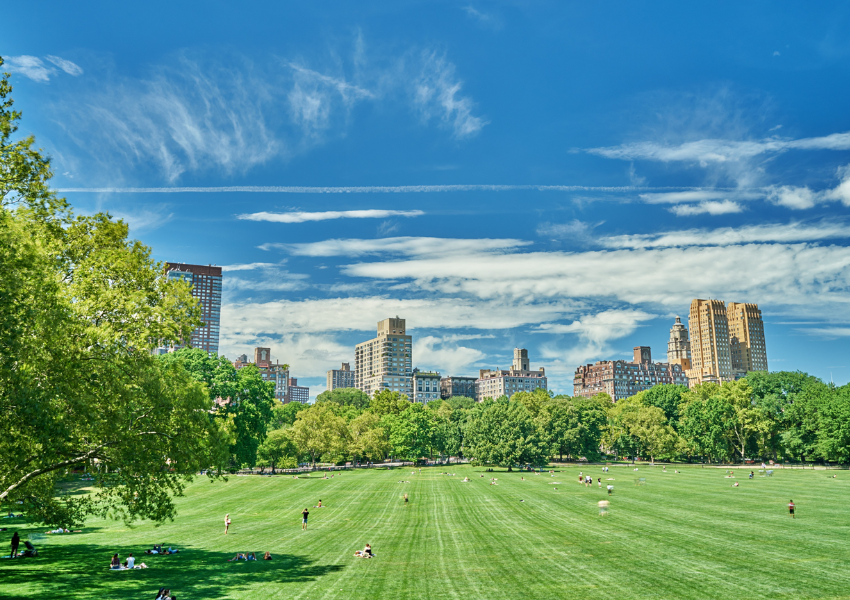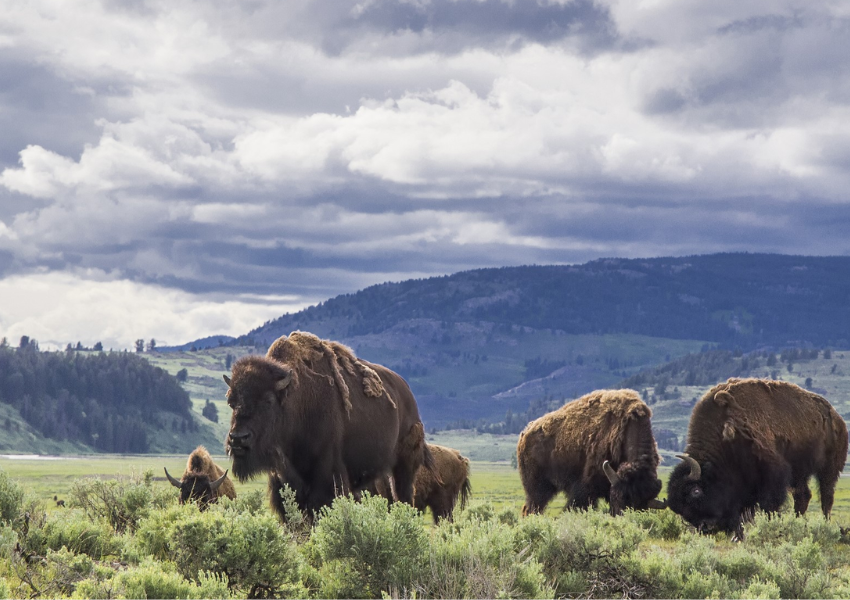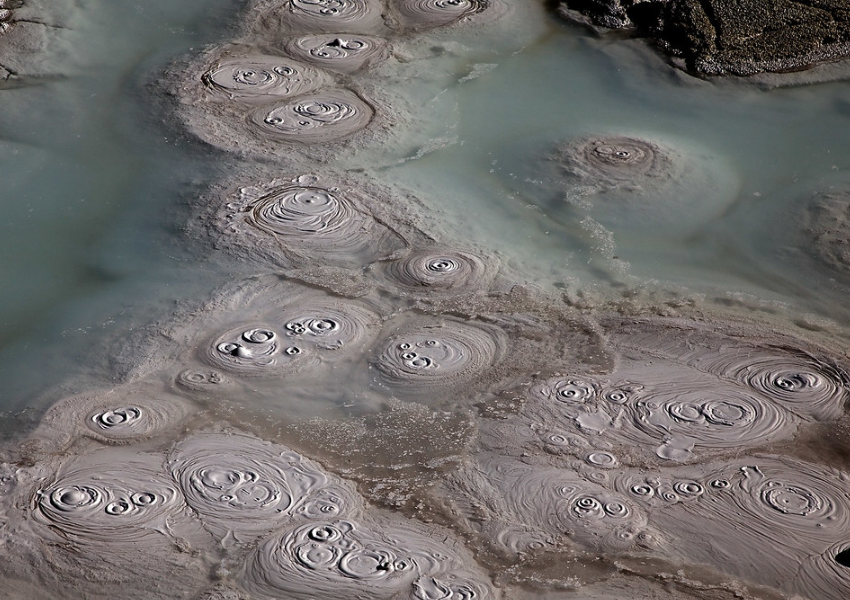At the heart of Yellowstone’s allure lies its unparalleled geothermal wonders. About 50 percent of the world’s hydrothermal features’re at Yellowstone National Park, creating an effect that makes the ground appear to be on fire.
Renowned for hosting the world’s largest active geyser field, Yellowstone National Park boasts over 10,000 hot springs, geysers, mudpots, travertine terraces, and fumaroles. Of which more than 500 are geysers. Iconic features like Old Faithful, Morning Glory Pool, and the vibrant Grand Prismatic Spring captivate visitors with their beauty and power. While some geysers, such as Old Faithful, erupt with remarkable regularity, others like Steamboat Geyser are far less predictable
Table of Contents
ToggleHot springs
Hot Springs are part of the park’s extensive hydrothermal system, which is the result of underlying volcanic activity. Beginning as rain and snow on the surface, water seeps deep into the Earth, where geothermal activity near an immense underground magma chamber superheats it. An unobstructed plumbing system enables the hot water to ascend back to the surface. Continuous convection currents circulate the water, maintaining its temperature just below the threshold for triggering an eruption.
Occasionally, the seething, boiling waters of a hot spring can erupt explosively, propelling water high into the air, resembling the behavior of a geyser.
Thermophilic microorganisms with vibrant bright colors, inhabit Yellowstone’s hydrothermal basins. Individually, single microorganisms are often too small to be seen with the naked eye, but when they group together by the trillions, they form of layers of beautiful, colorful mats.
So what drives the diverse array of colors produced by thermophilic microorganisms? These microorganisms thrive at distinct temperature ranges within hot springs and cannot endure significant deviations from their preferred thermal conditions. Once they reach the limits of their temperature tolerance, these microorganisms perish and are succeeded by another bacterial group. Consequently, this cycle results in the formation of layers of beautiful, colorful mats.
The Grand Prismatic Spring
With crazy-bright colors and enormous size is one of the most visually striking features of Yellowstone National Park. What Makes the Grand Prismatic so Grand? Situated in the Midway Geyser Basin. The vibrant blue center is surrounded by rings of green, yellow, orange, and red, caused by different types of thermophilic bacteria.
Geysers
Yellowstone National Park is home to an extraordinary collection of geysers, offering a spectacular display of geothermal activity.
Among these geothermal features, geysers are the rarest and most fascinating. Unlike typical hot springs, geysers have unique plumbing systems with one or more constrictions near the surface. Which cause them to build up pressure until they erupt spectacularly. These constrictions trap water, preventing it from circulating freely and allowing heat to escape. Steam forms and expands, building pressure in the constricted plumbing. At a critical point, confined steam bubbles lift the water above the surface vent, causing the geyser to splash or overflow. This sudden decrease in pressure triggers violent boiling. Large amounts of steam forcefully expel water from the vent, initiating an eruption. Water is expelled more quickly than it can be replenished, causing the heat and pressure to gradually decrease. The eruption ceases once the water reservoir is depleted or the system cools down. What rare and captivating phenomenon, standing out amidst Yellowstone’s diverse hot springs!
Yellowstone National Park boasts more geysers than anywhere else on Earth.
Old Faithful Geyser
Old Faithful is one of the most famous geysers in the world, renowned for its predictable eruptions. It is accompanied by numerous other geysers, both large and small, named and unnamed. Old Faithful erupts approximately every 90 minutes, though this interval can vary between 60 and 110 minutes. The eruptions can reach heights of 106 to 185 feet (32 to 56 meters) and last between 1.5 to 5 minutes.
Norris Geyser Basin
Norris Geyser Basin is the hottest in Yellowstone. It sits at the intersection of three major faults, contributing to its geothermal dynamism.
Castle Geyser
Known for its large cone and dramatic eruptions that can last for 20 minutes, reaching heights of up to 90 feet (27 meters).
Steamboat Geyser
The tallest active geyser in the world, capable of shooting water more than 300 feet (91 meters) into the air, though its eruptions are less predictable than those of Old Faithful.
Travertine Terraces
Travertine terraces are formed from limestone.
Thermal water ascends through a network of small fissures and fractures in the rock layers, forming a plumbing system that brings it to the surface as hot springs. During its ascent, the hot water interacts with gases, including carbon dioxide, released from the magma chamber. Some carbon dioxide dissolves in the water, creating a weak carbonic acid solution. This acidic water then dissolves limestone deposits as it moves through the rock layers, breaking down the calcium carbonate.
Upon reaching the surface and being exposed to the air, the dissolved calcium carbonate undergoes a chemical reaction. This leads to the precipitation of solid mineral deposits, primarily composed of travertine. Over time, these mineral deposits accumulate, forming the distinctive travertine terraces
Mammoth Hot Springs
Famous for its terraced formations created by calcium carbonate deposits. The terraces are constantly changing shape and color due to the flow of hot water.
Mudpots
A mudpot is like a natural double boiler. Surface water collects in a shallow, clay-lined depression, heated by steam rising from thermal water below. The presence of hydrogen sulfide gas gives mudpots their distinctive rotten egg smell. Microorganisms use this gas for energy, converting it to sulfuric acid, which breaks down rock into clay. This process creates a bubbling, gooey mix. Ferdinand Hayden, during his 1871 expedition, called Mud Volcano “the greatest marvel we have met with.
Fumaroles (or Steam Vents)
A fumarole, or steam vent, forms when a hydrothermal feature has minimal water, causing it to boil away before reaching the surface. These vents release steam and gases from beneath the Earth’s surface, often producing hissing or whistling sounds. Steam vents can be superheated, with temperatures reaching up to 280°F .
Notable Fumaroles in Yellowstone:
Roaring Mountain, covered with numerous fumaroles dot an entire mountainside. It roduces a constant, audible roar due to the escaping steam. This natural spectacle is especially dramatic on cool days when the steam is more visible against the mountain backdrop.
Located in Norris Geyser Basin: This basin contains several prominent fumaroles, including the Black Growler Steam Vent, known for its high-temperature steam emissions.
- Discover the Best Attractions in New York City
- Wildlife of Yellowstone National Park
- Mud pots
- Steamboat Geyser
- Castle Geyser
- Norris Geyser Basin
- Old Faithful Geyser
- The Grand Prismatic Spring
- Geysers and Hot Springs Yellowstone National Park
- Mount Washburn
- Yellowstone Lake
- Mammoth Hot Springs
- Avalanche Peak
- The Grand Canyon of the Yellowstone
- Outdoor Adventures Of Yellowstone National Park
- Unlocking Yellowstone: 14 Essential Insights for Your Journey
- Yellowstone National Park
- Best places to visit in the USA
- Grand Canyon West Rim
- New York City

